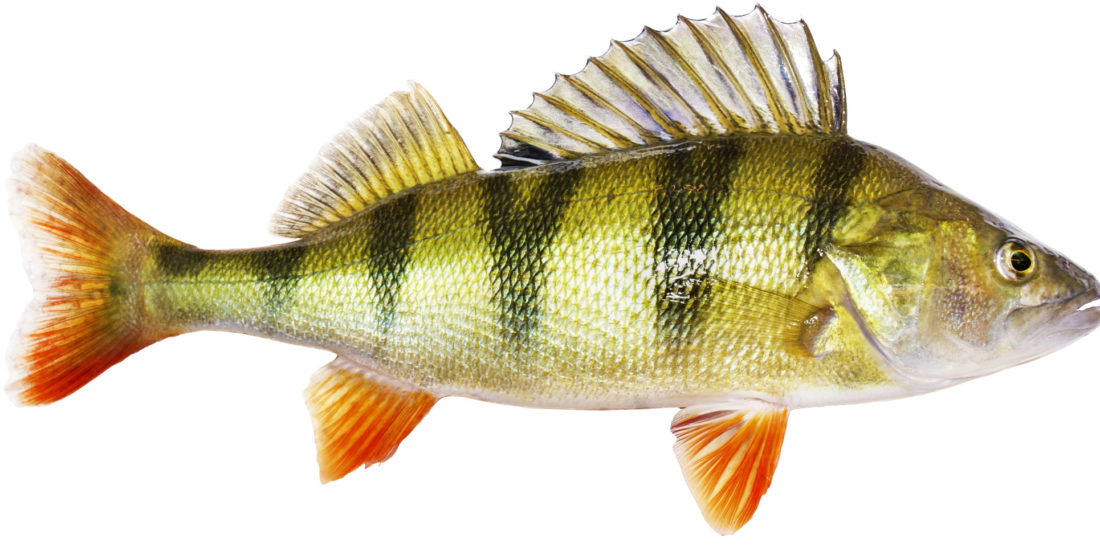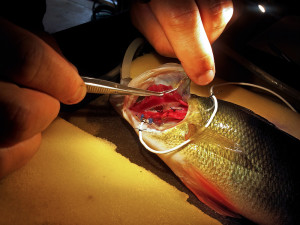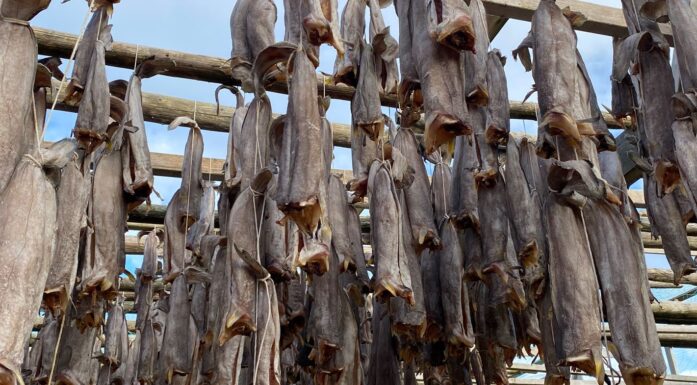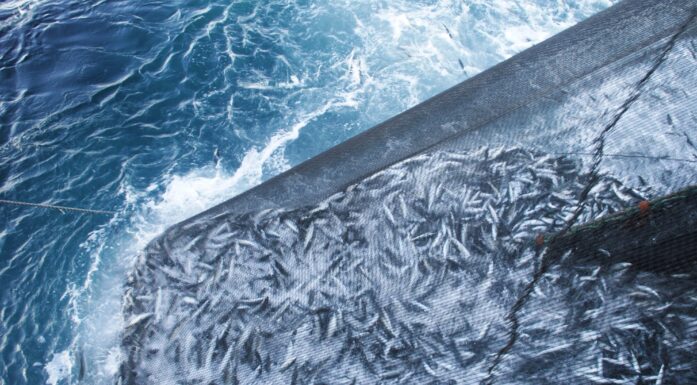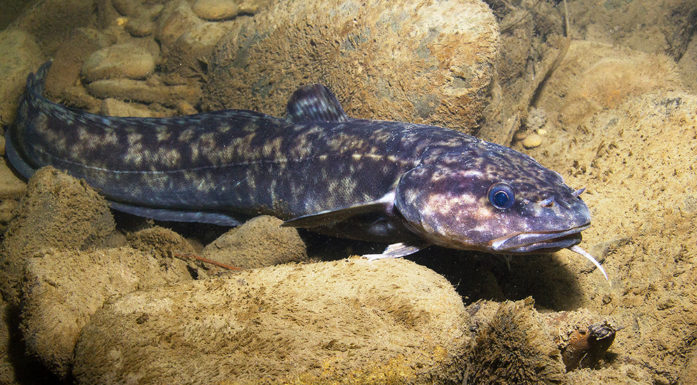Plastic floors, concrete ceilings and hot fish
Fish can adapt their metabolisms to cope with warmer ocean temperatures, but not necessarily with extreme heat.
CLIMATE CHANGE: Fish can adjust to warmer ocean temperatures, but heat waves can still kill them, a team of researchers from Sweden, Norway and Australia reports in an article just published in Nature Communications.
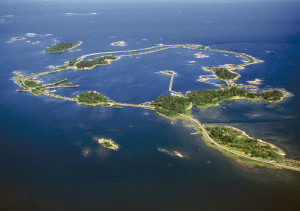
An overview of the 1 km2 Forsmark Biotest Enclosure, off the Swedish coast in the Baltic Sea. Photo: Göran Hansson
“A species might adapt and grow well (in warmer waters) but once you get strong heat spells, the water temperature might reach lethal temperatures and kill them,” said Fredrik Jutfelt, an associate professor in biology at the Norwegian University of Science and Technology who was senior author of the study.
Jutfelt and his colleagues studied European perch that live in a unique enclosed basin of warm water off the Swedish coast. The man-made basin, called the Forsmark Biotest Enclosure, was created three decades ago as a 1 km2 open-air laboratory by piping warm water from the nearby Forsmark nuclear power plant into the enclosed basin.

The Forsmark Biotest Enclosure, with a view of the Forsmark nuclear power station on the horizon to the left. Photo: Fredrik Jutfelt
The result is water that is between five and 10 degrees C warmer than the surrounding Baltic Sea, but that otherwise experiences natural daily and seasonal fluctuations. It offers researchers a kind of crystal ball on what can happen to fish in a warmer world.
“It’s a fantastic model for studying climate change effects,” Jutfelt said. “It’s a whole natural ecosystem experiencing long-term warming.”
- You might also like: Uncovering the secrets of Arctic seabird colonies
Plastic floors…
In experiments conducted in 2012 and 2013, researchers compared the Biotest perch to European perch by putting perch from outside of the enclosure into tanks filled with warm water from the enclosure to see how their metabolic rates changed.

The fish from outside of the Biotest enclosure were placed in plastic tanks filled with warm water from the enclosure. Researchers measured their metabolic rates and compared them to the metabolic rates of fish that lived their whole lives in the warm waters of the enclosure. Photo: Fredrik Jutfelt
“This gives us the opportunity to study how fish adjust to a warmer environment over time, which is crucial for understanding climate change,” said first author Erik Sandblom from the University of Gothenburg’s Department of Biological and Environmental Sciences.
The researchers found the resting metabolism for the Biotest fish was lower than for the perch that had been taken from outside of the enclosure and put in warm water, which showed that the Biotest fish had been able to adjust their metabolisms to the overall higher temperatures in the basin over time.
“When we warmed up the reference perch quickly, their resting metabolic rate went up dramatically, whereas the Biotest fishes’ resting metabolic rates were significantly lower at the same temperature,” said Timothy Clark, a senior research fellow at the University of Tasmania in Australia who was part of the research team.
The researchers described this metabolic adaptation as a “plastic floor,” meaning that there was some flexibility in the ways the Biotest fish had adjusted their resting metabolisms to the warmer temperatures.
- You might also like: Ivory gulls in trouble
…but concrete ceilings
But the fish that inhabited the Biotest enclosure weren’t able to make the same kind of change in their ability to tolerate temperature extremes, the researchers found.
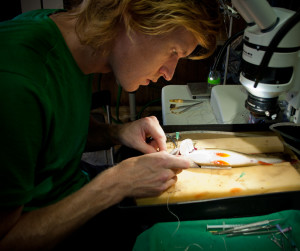
Fredrik Jutfelt attaches sensors to a perch so researchers can measure its metabolic rate. Photo: Erik Sandblom
For example, perch living in the Baltic outside of the Biotest enclosure were able to survive in temperatures that were as much as 10 degrees C warmer than the water temperatures they had been used to living in during the summer months.
The fish inside the Biotest enclosure, while adjusted to much warmer waters than the Baltic fish, were only able to survive temperatures that were 4.6 degrees C warmer than the waters they were used to living in during the summer. The researchers called this phenomenon a “concrete ceiling,” because the Biotest enclosure fish were unable to tolerate much more of a maximum temperature than their free-living Baltic brethren.
“Even though the (Biotest) fish had been there for at least their lifetime, if not for generations, there was very little change in the lethal temperature” the fish could tolerate, Jutfelt said. “They have almost completely adjusted their resting physiology to the higher temperatures. But there has been very little adjustment in their tolerance to lethal temperatures.”
In other words, Jutfelt said, the fish are living very close to their lethal limit.
“They have a very small safety margin to their lethal temperature,” he said.
- You might also like: Hacking Trondheim to cut greenhouse gas emissions
Weak link in physiological adaptation
Jutfelt said this limited ability to adjust to higher maximum lethal temperatures was a potential “weak link” in the ability of fish to adjust to climate change.
“Rather than having problems with their growth rates and normal daily life, the real problem will be with short heat spells,” he said.
If this finding holds true for other fish species, he said, then fish living in northern lakes or the ocean may appear to be healthy even as water temperatures climb. But if waters warm too much, from a strong heat wave, the apparently well-adapted fish populations might die, he said.
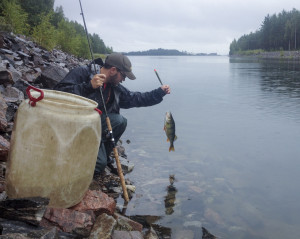
Erik Sandblom catches European perch so he can study how they adjust to warmer water. Photo: Fredrik Jutfelt.
“We think this might be important in fish (overall), the fact that they might not be able to adjust their tolerance to maximum levels,” he said. “We think that might be the bottleneck for survival.”
“In a future with a warmer climate and more extreme weather, it will be more difficult for fish to survive,” Sandblom said.
Reference: Erik Sandblom, Timothy D. Clark, Albin Gräns, Andreas Ekström, Jeroen Brijs, L. Fredrik Sundström, Anne Odelström, Anders Adill, Teija Aho & Fredrik Jutfelt. Physiological constraints to climate warming in fish follow principles of plastic floors and concrete ceilings. Nature Communications 7, Article number:11447, doi:10.1038/ncomms11447
